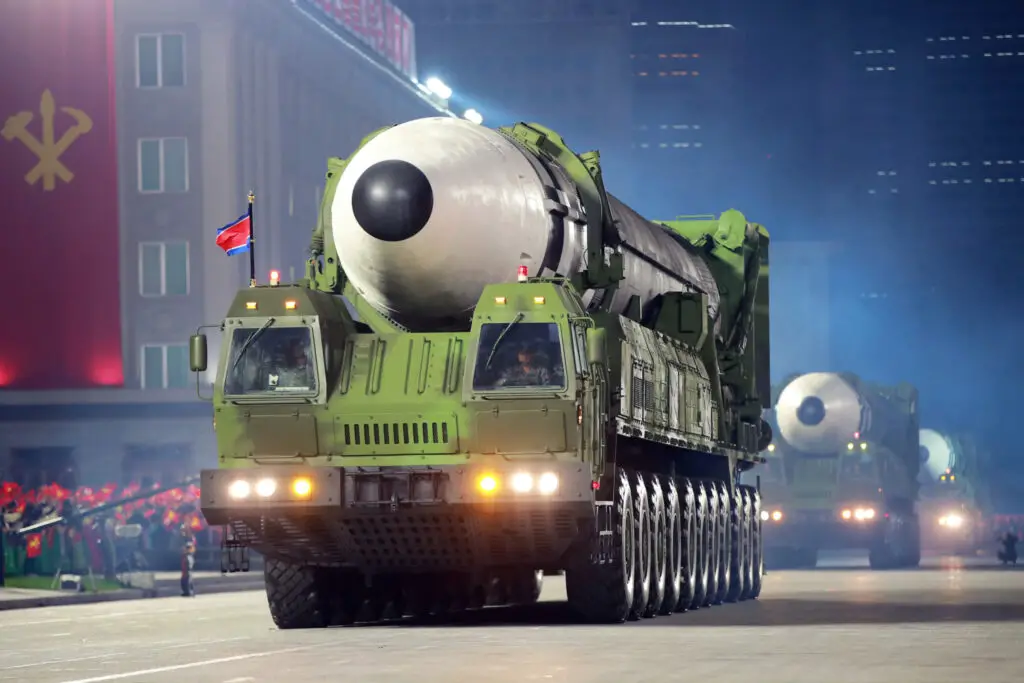North Korea said it tested the Hwaseong-17 intercontinental ballistic missile on Thursday under the direct order of Kim Jong-un.
Chairman Kim issued a handwritten order for the test-fire of the new ICBM, visited the test-fire site, and directly instructed the entire process of the ICBM Hwasong-17 test-fire.
“The success of the development of a new intercontinental ballistic missile, which is a collection of advanced defense science and technology, is a great demonstration of the power of our independent defense industry, which has been developed and pioneered by our own initiative,” he said.
The North Korean leader noted that “the new strategic weapons of the DPRK will allow the whole world to once again clearly realize the power of our strategic armed forces,” a KCNA statement says.
Kim Jong-un stressed that “the national defense forces will have enormous military-technical capabilities, unflappable in the face of any military threats and blackmail, and [allow] to be kept in full readiness for a long-standing confrontation with the imperialists from the United States,” the publication said.
As per the South Korean military, on Thursday, the DPRK launched a missile at 14:34 local time from the territory of the Sunan airfield near Pyongyang.
Hwasong-17 ICBM
Giving the launch details, the North Korean publication wrote, “The intercontinental ballistic missile Hwasong Po-17, launched from Pyongyang International Airport, climbed to a maximum peak altitude of 6,248.5 km, flew a distance of 1,090 km for 4,052 s (about 67.5 minutes Ed.), and landed precisely in the planned waters of the high seas of the East Sea of Korea.”
Hwaseong-17 is a three-stage missile that could theoretically carry two or three nuclear warheads.
As per experts, if the missile flies the optimal trajectory for the maximum range, then this rocket could fly to a distance of up to 15 thousand or even more kilometres. This means that, if necessary, the DPRK can attack the largest U.S. cities at the same time – for example, New York, Washington and Los Angeles.

The most long-ranged of the North Korean ICBM was the Hwasong-15, tested in November 2017. During the test, it rose to a height of 4475 km, flew 975 km and was in the air for 53 minutes. Its radius of action was estimated from 9 to 13 thousand km. That launch led to a sharp increase in tension around the DPRK, and the U.S. dispatched several U.S. aircraft carrier groups to the region. However, the current rocket has surpassed the launch of November 2017 in all respects.
In April 2018, Kim Jong-un had announced a moratorium on the launch of ICBMs, and now, it turns out, he has ended it.
Extended Hwasong-15?
South Korean media, citing sources in military circles, did not rule out that the launch was, after all, the Hwaseong-15, although it was a noticeably improved version, which is capable of flying up to 15,000 km.
Hwasong-17 size comparison
As per independent South Korean experts, Hwasong-17 was first displayed at a military parade on October 10, 2020, which was held in Pyongyang in honour of the 75th anniversary of the founding of the Workers’ Party of Korea. The system immediately attracted attention with its huge size and was nicknamed the “North Korean monster” abroad. The length of the Hwaseong-17 is 23-24 m, which exceeds the size of the largest ICBMs in Russia, China and the United States. The Russian Topol-M is 22.7 m long, the Chinese DF-41 is 21 m, and the American Manhattan-3 is 18.2 m. Hwasong-17 ICBM was loaded on an 11-axle wheeled chassis.
A satellite launch?
According to the South Korean military, the rocket could have put a satellite into orbit. However, it is obvious that even if Washington is convinced that a satellite has been launched, it will still regard it as the launch of an intercontinental ballistic missile.
South Korea responds with its own missiles
The southerners responded to the North Korean launch almost two hours later at 4:25 p.m. local time with their own rocket fire, launching a Hyungmu-II ballistic missile, an ATACMS missile, a Haeseong-II ship-to-surface missile, two air-to-air systems, and ground attack system JDAM. Seoul made it clear that it has the ability to destroy North Korean missile ranges.
This is the 12th show of force by the DPRK since the beginning of the year. On March 20, the armed forces of the People’s Republic carried out firing from multiple launch rocket systems, and on March 16, an unsuccessful launch, presumably, of a ballistic missile took place. On February 27 and March 5, intercontinental ballistic missile systems were tested.
